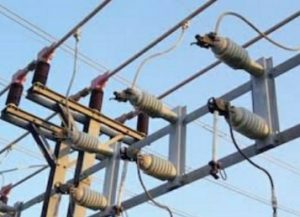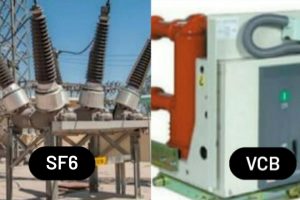Grid substation:
For Distinguishing between grid and distribution substation we have to know the definition of these two terms. Grid substation is a substation that receives power from a power generating station and lowers the voltage with a step-down transformer and transmits it to the distribution substation or to the nearest grid .
This substations are two types. This types are Primary Grid Substation and Secondary Grid Substation.
Primary grid substation:
Primary grid substation is a substation that receives power directly from a generating substation and transmits it to the nearest grid .
Secondary grid substation:
Secondary grid substation is a grid substation that receives power from the primary grid and transmits it to a connected grid or distribution substation. So, grid substations are usually rated at 230/132, 400/132, 400/230/132, 230/132/33 kV etc.
Distribution Substation :
Actually A distribution substation receives power from the grid substation. So the electrical power of this substation is supplied to industry, residential customers. The feeders go in large quantities to different premises and it has many branches. But distribution substation has some components. It is given below:
- Feeder
- Switching apparatus
- Busbar
- Transformers
- Grounding
Distinguishing between grid and distribution substation:
Suppose you are walking down the street. Suddenly a substation caught your eye. As an electrical student, it is natural to be curious about this. You noticed that the substation has all the devices like current transformer, potential transformer, circuit breaker, lightning arrester. There are some strategies for distinguishing between grid and distribution substation. Let’s discuss.
Observing the nature of the incoming line or tower for distinguishing between grid and distribution substation :
Firstly, we can distinguish them by observing the nature of tower. If it is a grid substation, it will have three phase double or triple circuit incoming lines of 132, 230, 400, 500, 765, 800 kilovolts etc. And the distribution substation will have an incoming line of 33 kilovolts. Now the question will arrive, then how do I know which one is how many kilovolt lines?
Ways to recognize 132, 230, 400 kilovolt lines :
These are similar like the transmission lines. These towers are up to 25-28 meters long. It has suspension type insulator. The double circuit line has a total of six lines, three on each side of its crossarm. Ground wire is a wire which is at the top of the tower and it is a thin type of wire. So there are too many wire sags on these lines. Some transmission lines use blue, orange marker balls. As the voltage in the transmission line increases, the height of the tower increases, the number of insulators increases, the size of the conductor decreases. So it is possible to identify the transmission line by observing all these factors.
How to identify 33 KV line:
Poles of 33 kilovolts are usually 10-15 meters long. It usually uses pin type insulators. These types of insulators are brown in color and made of porcelain. The insulators are arranged on both sides of the crossarm. But these lines have less wire sag. DOF (Drop Out Fuse) can be noticed in this. Besides There is also a looping with lightning arrester ground wire.
What is a drop out fuse?

This device protects the 11 to 33 kV distribution line from excess voltage or current. It has tin or silver alloy in it. The stick with the fuse is called “fuse link or isolator” which helps to separate the fuse from the line at critical times when the fuse burns due to line fault. Fiberglass is the main ingredients of it. The ampere rating of the fuse is 1 to 200 amperes. It has to be placed at an angle of 20 degrees to the line so that it can be placed correctly in the line due to the center of gravity.
Considering the area of the substation for Distinguishing between grid and distribution substation:
If we consider the area of substation, we can identify grid and distribution substations.
This substation has two to three times the area of distribution substation. For example, the area of the grid substation can be up to 1000-5000 square feet.
Considering the size of the electrical device:
The capacity of grid substation is 10-500 MVA and the capacity of distribution substation is 1-5 MVA. So the load current rating of the grid substation is much higher than that of the distribution substation.
Moreover, naturally the grid substation will be much larger than the transformer, potential transformer, power transformer, lightning arrester, isolator, busbar size, distribution substation. So, it is very easy to differentiate between two substations of device size.
Observing the circuit breaker:
If we look at the circuit breakers, we can see the difference between the two substations. For example, grid substation uses SF6 and distribution substation uses VCB.

SF6 = Sulphur Hexafluoride Circuit Breaker
VCB = Vacuum Circuit Breaker
Power grid uses SF6 breakers typically 400/230/132/33 kV substations and VCB typically in 33/11 KV substations.
Read others article :



